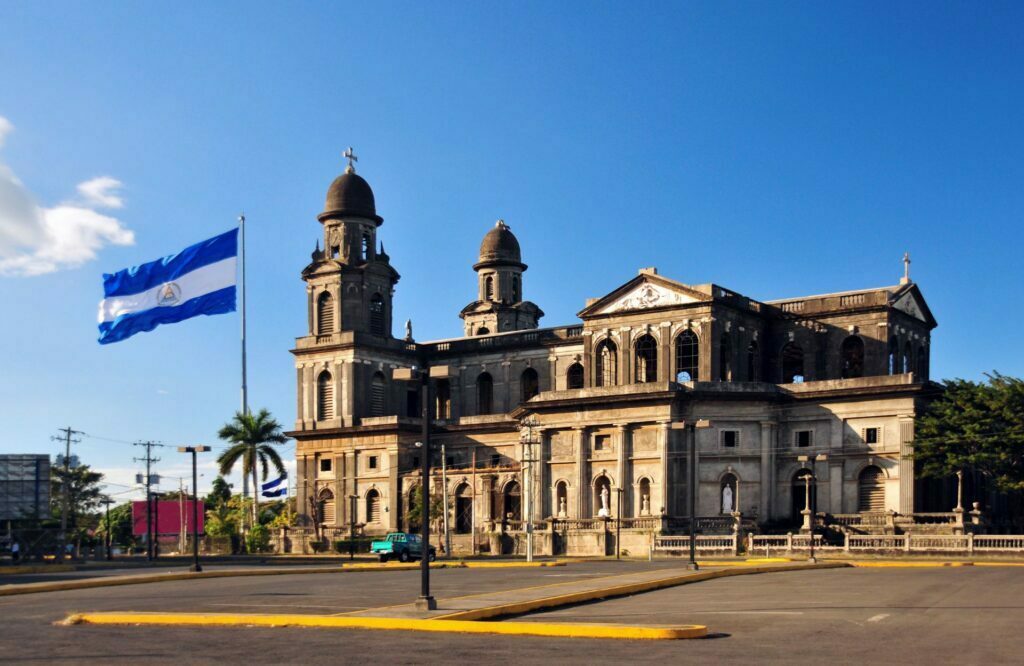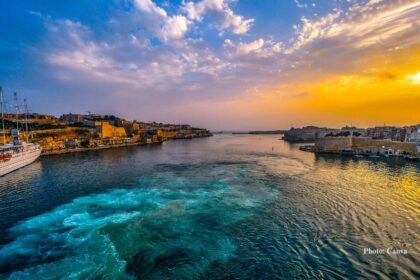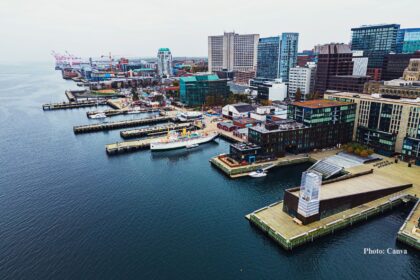Introduction
Nicaragua, nestled in the heart of Central America, is a country rich in natural beauty, vibrant culture, and historical significance. From its pristine beaches and lush rainforests to its colonial cities and volcanic landscapes, Nicaragua offers a diverse range of experiences for travelers. In this comprehensive guide, we will delve into the top activities and attractions the country has to offer, along with essential safety tips to ensure a memorable and secure journey.
I. Discovering Natural Wonders
Volcanic Adventures:

Nicaragua is home to a string of impressive volcanoes. The Masaya Volcano, for instance, offers the unique opportunity to peer into an active crater. Visitors can also hike to the summit of Concepción on Ometepe Island for breathtaking views of Lake Nicaragua.
Pristine Beaches:
The country boasts a Pacific and Caribbean coastline, each offering distinct experiences. From the surf-friendly waves of San Juan del Sur to the tranquil shores of Little Corn Island, Nicaragua provides a paradise for beach lovers.
Breathtaking Rainforests:
Embark on a journey through the dense jungles of Indio Maíz Biological Reserve or Bosawás Biosphere Reserve for encounters with diverse flora and fauna, including elusive jaguars and vibrant parrots.
II. Immerse Yourself in Culture
Historical Cities:
Wander through the charming streets of Granada and León, two of Nicaragua’s colonial gems. Explore well-preserved architecture, visit historic cathedrals, and delve into the country’s rich history.
Local Markets and Cuisine

Indulge in the flavors of Nicaragua by exploring local markets such as Mercado Roberto Huembes in Managua. Sample traditional dishes like gallo pinto (rice and beans) and vigorón (a dish featuring yuca, chicharrón, and cabbage).
Festivals and Celebrations:
Plan your visit around one of Nicaragua’s lively festivals, such as the colorful Palo de Mayo or the Semana Santa (Holy Week) processions, for an immersive cultural experience.
III. Safety Tips for Travelers
Stay Informed:
Before your trip, stay updated on travel advisories and local news. Register with your embassy or consulate and keep emergency contact numbers handy.
Health Precautions:
Ensure your vaccinations are up-to-date and take precautions against mosquito-borne illnesses like dengue fever. Drink bottled or purified water and practice good hygiene.
Transportation Safety:
Choose reputable transportation options and exercise caution when using public transport. Be aware of your surroundings and secure your belongings to prevent theft.
Cultural Sensitivity:
Respect local customs and traditions. Dress modestly in religious or rural areas, and always ask for permission before taking photographs of individuals.
READ ALSO: A Budget-Friendly Guide to Puerto Rico Travel: Is it Safe to Travel There?
Language Skills:
While many locals in tourist areas speak English, learning a few basic phrases in Spanish can go a long way in enhancing your travel experience and navigating through non-touristy areas.
Nicaragua, with its diverse landscapes and rich cultural heritage, beckons adventurous travelers seeking an off-the-beaten-path experience. By exploring the country’s natural wonders, immersing yourself in its vibrant culture, and adhering to essential safety tips, you can unlock the full potential of your Nicaraguan adventure. Remember to approach your journey with an open mind, a spirit of exploration, and a commitment to responsible tourism.
Frequently Asked Questions
Below is a set of frequently asked questions (FAQs) about Nicaragua, covering a range of topics from travel and safety to culture and logistics:
Travel and Attractions:
Q1: What are the must-visit attractions in Nicaragua?
A1: Nicaragua offers diverse attractions. Don’t miss the colonial cities of Granada and León, the volcanic landscapes, Ometepe Island, and the beautiful beaches of San Juan del Sur and Little Corn Island.
Q2: Is it safe to visit Nicaragua as a tourist?
A2: Overall, Nicaragua is considered safe for tourists. However, like any destination, it’s essential to stay informed about local conditions, follow safety guidelines, and be aware of your surroundings.
Q3: What outdoor activities are popular in Nicaragua?
A3: Nicaragua is a paradise for outdoor enthusiasts. Volcano hiking, surfing in San Juan del Sur, exploring rainforests, and enjoying water sports on Ometepe Island are popular activities.
Safety and Health:
Q4: Are there any health precautions travelers should take?
A4: Yes, ensure your routine vaccinations are up-to-date. Take precautions against mosquito-borne diseases, drink bottled or purified water, and be cautious with food hygiene.
Q5: How is the healthcare system in Nicaragua?
A5: While medical facilities exist, they may vary in quality. Consider travel insurance that covers medical emergencies and check if any vaccinations or health precautions are recommended before your trip.
Q6: Are there any safety tips for transportation in Nicaragua?
A6: Choose reputable transportation options, exercise caution with public transport, and be aware of your belongings to prevent theft. Consider renting from reputable companies if driving.
Cultural Etiquette
Q7: What should I wear and pack for my trip to Nicaragua?
A7: Pack lightweight and breathable clothing, comfortable shoes for walking, and swimwear for beach destinations. Modesty is appreciated in rural and religious areas.
Q8: Is it necessary to speak Spanish, or is English widely spoken?
A8: While English is spoken in tourist areas, learning some basic Spanish phrases enhances the travel experience, especially in non-touristy regions.
Q9: What cultural customs should I be aware of?
A9: Respect local customs, ask for permission before taking photos, and be mindful of dress codes in religious or rural areas. Nicaraguans are generally friendly and appreciate polite behavior.
Logistics and Planning
Q10: When is the best time to visit Nicaragua?
A10: The dry season from November to April is ideal for visiting. However, be mindful of specific activities, such as turtle watching or volcano trekking, which may have seasonal variations.
Q11: How can I stay updated on travel advisories for Nicaragua?
A11: Check with your government’s travel advisory website, register with your embassy or consulate, and stay informed about local news and conditions before and during your trip.
Q12: What currency is used in Nicaragua, and are credit cards widely accepted?
A12: The official currency is the Nicaraguan Córdoba. While credit cards are accepted in urban areas and tourist spots, it’s advisable to carry cash, especially in more remote regions.
These FAQs provide a comprehensive overview for travelers considering a visit to Nicaragua, covering aspects of safety, health, culture, and logistics. Always check for the latest information and tailor your preparations based on your specific travel plans.
Conclusion
In conclusion, Nicaragua stands as a hidden gem in Central America, offering a tapestry of experiences that range from exploring volcanic landscapes and pristine beaches to immersing oneself in the rich cultural heritage of colonial cities. As a traveler, the key to unlocking the full potential of a Nicaraguan adventure lies in a harmonious blend of exploration, cultural respect, and adherence to essential safety measures.
The country’s natural wonders, including volcanoes, rainforests, and coastlines, provide a playground for outdoor enthusiasts, while its historical cities and vibrant markets offer a glimpse into the heart of Nicaraguan culture. It is essential for travelers to stay informed about health precautions, transportation safety, and local customs to ensure a safe and enjoyable journey.
By adopting a respectful attitude towards local traditions, embracing the diversity of the landscape, and incorporating a sense of cultural sensitivity into the travel experience, visitors can forge lasting memories in Nicaragua. Whether navigating through the cobblestone streets of Granada, basking in the sun on the beaches of San Juan del Sur, or trekking up volcanic slopes, Nicaragua promises a unique and enriching adventure for those willing to explore its beauty.
As with any travel destination, staying updated on travel advisories, respecting local customs, and being aware of personal safety is paramount. Nicaragua, with its warm hospitality and stunning landscapes, awaits those seeking an authentic and off-the-beaten-path experience. So, pack your bags, immerse yourself in the vibrant culture, and get ready to discover the untamed beauty of Nicaragua.
In another related article, Traveling to Central America: A Guide to Money-Saving, Safety, and More






